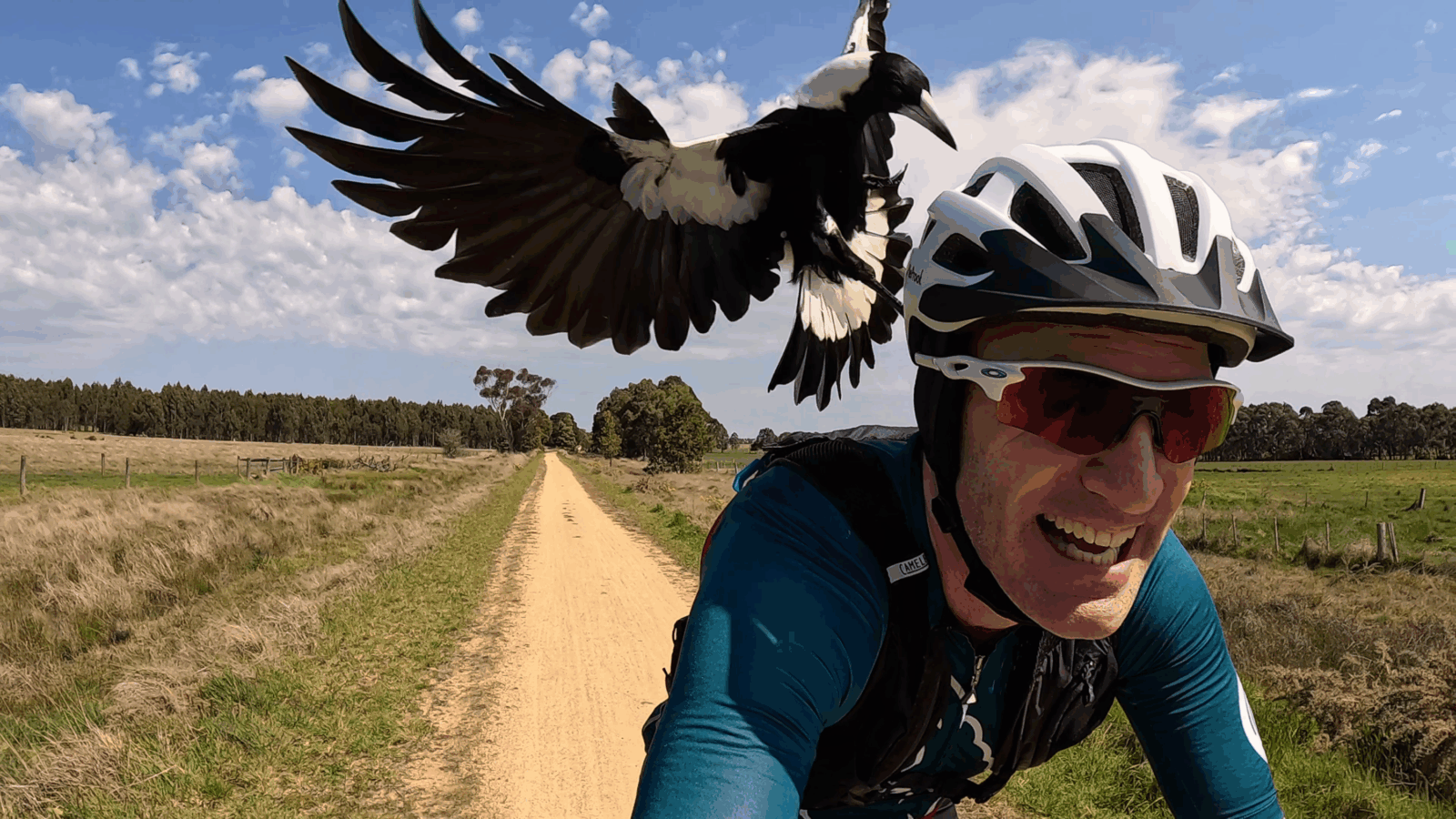They’re here!!! If you’re a regular cyclist and you’ve ridden anywhere in Australia in Spring, you’ve no doubt been swooped by an angry Magpie protecting his young.
While many Australians enjoy the delightful early morning warble of the Aussie magpie, they become the enemy of many cyclists when some male rogues divebomb unsuspecting riders during Spring.
For the record, this writer really loves birds and thinks they play a key role in our urban environments, but I’m not so keen when they dive bomb me while I’m riding by. But like many threats in life, you can feel much more relaxed about the idea by changing your attitude towards swooping magpies.
Most magpies don’t swoop cyclists at all, and of those that do, very few will make contact with you. Those that connect will usually just tap lightly on your helmet and then leave you alone. If you’ve been swooped by one, you’ll also have noticed that magpies generally come from behind, so unless you see a looming shadow, you’re not usually aware of the swooping until it’s over.
Having said all that, the most effective strategy to minimise magpie swooping is to avoid the area where you know there are aggressive birds on the prowl. There’s a handy website called magpiealert.com where riders and others post the location of swooping birds, so you can avoid the route altogether until the danger time passes.

If you encounter a surprise attack, the only way to handle the situation is to remain calm and continue on your way. Most people are injured more from falling off their bikes or into oncoming traffic than from a bird attack, which is why it’s essential to stay calm and keep riding.
Magpies seem to get most of the attention, but other aggressive birds will also divebomb cyclists, including the sometimes-vicious butcherbird that re-emerges in Spring to protect their babies. Swooping birds don’t just single out cyclists; they also target pedestrians or even pet dogs.
Native birds such as Australian magpies are highly protective of their eggs, nests, and young and will often swoop at unsuspecting passers-by if they feel threatened. Other native Australian birds that are common culprits include the aforementioned butcherbirds, kookaburras, and plovers, but even invasive species like Indian mynas can attack during the Spring months. Magpies seem to cop the majority of the blame, but from this writer’s experience, butcherbirds are actually more vicious.
Only a small proportion of birds swoop on people, and these often have a preference for a few individuals that the birds recognise or certain types of ‘targets’ like cyclists. A magpie will only defend its nest within a ‘defence zone’. For cyclists, this is usually an area within 150 metres.
Almost all swoops on people are carried out by male birds defending their eggs and chicks, which are in the nest for about six to eight weeks between July and November.
You can also share information about the locations of attacking birds with fellow cyclists via social media, such as the Facebook pages for your local cycling group and other ways you communicate with fellow cyclists.
Here are a few other tips to avoid injuries from swooping birds:
- Consider taking a different route if you know where a ‘swooping’ bird is nesting.
- They generally only attack solo or small groups of cyclists, so ride in a tight bunch (not always practical because there’s always going to be a certain amount of riding when you’re on your own).
- Wear sunglasses to protect your eyes.
- Consider covering your ears. Pie-proof helmets include ear protectors and a visor to help shield your face and ears.
- You may choose to dismount to avoid danger from traffic or a fall. Once you have dismounted, look at the bird directly; magpies and other birds usually won’t attack when you are watching them.
Here’s what doesn’t work:
- Painting eyes on your helmet is not very effective, as magpies have good eyesight and can learn the difference between painted and real eyes.
- Putting a few short cable ties on your helmet that stick up to deflect the swooping birds. Although if you put lots of long cable ties that are placed strategically, you may protect your ears and neck. But they may also make an annoying whistling noise when you get up to speed.
It’s important to note that all Australian native wildlife is protected by law, and it is illegal to harass or harm native birds and other wildlife.
Learn more at pieproof.com.au and magpiealert.com
Nicola Rutzou – a long-time contributor and, most recently, the editor of Bicycling Australia. Nicola is a keen Sydney-based road cyclist who writes reviews, news, and destination pieces, as well as the weekly e-newsletter for BA online.


